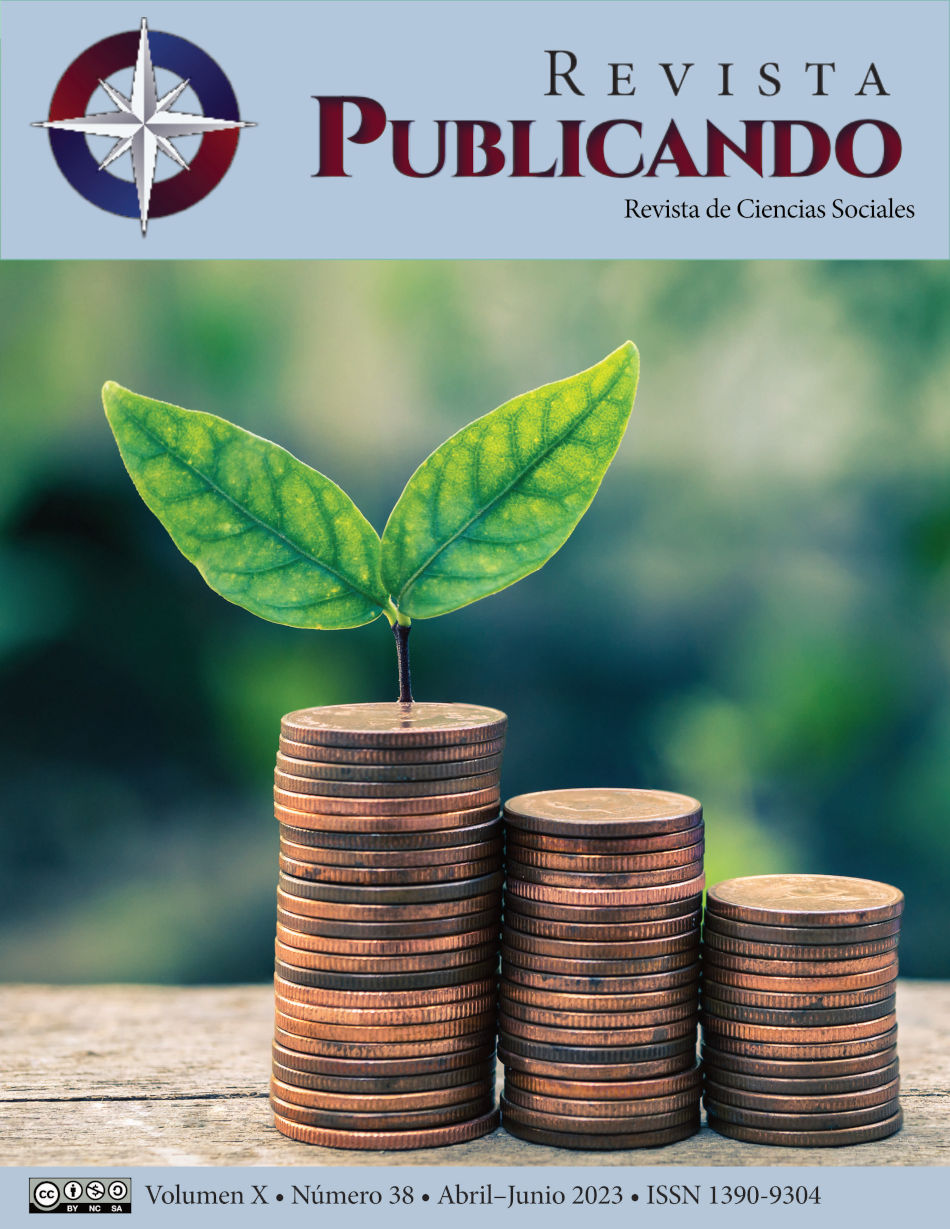Abstract
The world is on the verge of collapse, both in terms of the depletion of raw materials and the increase in pollution caused by the waste produced by humanity. The current linear economy model makes it possible that in the medium or short term, the collapse of the economy, the environment, and, therefore, of society will occur, bringing the possible end of humanity as a logical consequence. Economic relations based on a Circular Economy model of use and reuse of products, eliminating as much waste as possible, would avoid the fate predicted by the old economic model. To try to analyze this, we conducted a bibliographic review of scientific articles, books, and mainstream journals that deal with the subject exemplifying the steps being taken in implementing circular economies applied to different branches of the productive process. The present work is, therefore, the realization of an updated bibliographic search of articles and specialized pieces that bring the topic of circular economy closer to its manifestation as a basis for business sustainability and, therefore, for the economies of countries, especially in the area of underdeveloped nations according to the availability of material resources and their sustained depletion.
References
Alcubilla, L. (2015). De la economía lineal a la circular: un cambio necesario. El País. https://elpais.com/elpais/2015/10/30/alterconsumismo/1446190260_144619.html
Atiku, S. O. (2020). Knowledge Management for the Circular Economy. In Handbook of Research on Entrepreneurship Development and Opportunities in Circular Economy (pp. 520–537). IGI Global. https://doi.org/10.4018/978-1-7998-5116-5.ch027
Bergamini, T. P., & Hilliard, I. (2019). La Economía Circular en la Industria Alimentaria. Dossieres EsF, 35–40.
Brock, W. A., & Taylor, M. S. (2010). The green Solow model. Journal of Economic Growth, 15(2), 127–153.
Buisán, M., & Valdés, F. (2017). La industria conectada 4.0. ICE La Economía Digital En España, 898, 89–100.
Clarke, C., Williams, I. D., & Turner, D. A. (2019). Evaluating the carbon footprint of WEEE management in the UK. Resources, Conservation and Recycling, 141, 465–473. https://doi.org/10.1016/j.resconrec.2018.10.003
Córdova-Preciado, M. L., Lizbeth Salgado-Beltrán, & Bravo-Díaz, B. (2021). Economía circular y su situación en México. Indiciales, 1(1), 25–37. https://indiciales.unison.mx/index.php/Indicial/article/view/7
Cruz, J. F. O., Terrones, M. E. sangay, Puente, E. E. R. de la, & Silupu, W. M. C. (2019). Economía circular en residuos de aparatos eléctricos y electrónicos. Revista de Ciencias Sociales (RCS), 25(4), 196–208.
De-Mauro, A., Greco, M., & Grimaldi, M. (2015). What is Big Data? A concensual definition and a review of key research topics. AIP Confererence Prtoceedings, 1644(1), 97–104.
Esposito, M., Tse, T., & Soufani, K. (2018). The circular economy: An opportunity for renewal, growth, and stability. Thunderbird International Business Review, 60(5), 725–728. https://doi.org/https://doi.org/10.1002/tie.21912
Geissdoerfer, M., Savaget, P., Bocken, N., & Hultink, E. J. (2017). The Circular Economy - Anew sustainabity paradigm? Journal of Cleaner Production, 143, 757–768. https://doi.org/https://doi.org/10.1016/j.jclepro.2016.12.048
George, D. A., Lin, B. C., & Chen, Y. (2015). A circular economy model of economic growth. Enviromental Modelling & Software, 73, 60–63.
Gupta, S., Chen, H., Hazen, B. T., & Kaur, S. (2019). Circular economy and big data analytics: A stakeholder perspective. Technological Forecasting & Social Change, 144, 466–474. https://doi.org/https://doi.org/10.1016/j.techfore.2018.06.030
Halloran, A., Clement, J., Kornum, N., Bucatariu, C., & Magid, J. (2014). Addressing food waste reduction in Denmark. Food Policy, 49, 294–301.
Jurgilevich, A., Birge, T., Kentala-Lehtonen, J., Korhonen-Kurki, K., Pietikäinen, J., Saikku, L., & Schösler, H. (2016). Transition towards circular economy in the food system. Sustainability, 8(1), 69.
Koszewska, M. (2018). Circular economy — challenges for the textile and clothing industry. Autex Research Journal, 18(4), 337–347.
Morocho, F. R. A. (2018). La economía circular como factor de desarrollo sustentable del sector productivo. INNOVA Research Journal, 3(12), 78–98. https://doi.org/https://doi.org/10.33890/innova.v3.n12.2018.786
Nascimento, D. L. ., Alencastro, V., Quelhas, O. L. ., Caiado, R. G. ., Garza-Reyes, J. A., & Tortorella, G. . (2018). Exploring industry 4.0 technologies to enable circular economy practices in a manufacturing context: a business model proposal. Journal of Manufacturing Technology Management, 30(3), 1–174. https://doi.org/10.1108/JMTM-03-2018-0071
Vélez, R. M. (1981). Crisis y crecimiento acelerado. Notas sobre el caso de México. Investigación Económica, 40(158), 13–36.
Vidal, A. L. (2016). Economía circular en los prefabricados de hormigón: hacia el objetivo ‘cero residuos.’ Revista Técnica Cemento Hormigón, 976, 82–86.
Zamora, G., & Hinojosa, O. (2019). Economía circular en minería – caso de estudio: producción minera de Concentrados de Pb-Ag-Zn en Bolivia. Revista de Medio Ambiente Minero y Minería, 4(1), 3–17.

This work is licensed under a Creative Commons Attribution-NonCommercial-ShareAlike 4.0 International License.
Copyright (c) 2023 Edwing Rolando Soria Flores, Janeth Carolina Cabascango Jaramillo, Cristina Jaqueline Villegas Estévez, Álvaro René Pérez González




